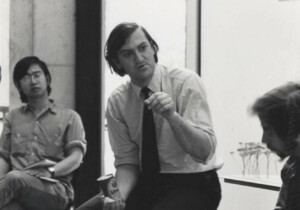The Spanish Biennial of Architecture and Urbanism (BEAU) has travelled to the U.S. for the first time in its history. Now in its thirteenth edition, the BEAU, this year titled Alternativas/Alternatives, is currently on show at the Cooper Union in New York after being exhibited in the Alhambra, in southern Spain. Alternativas/Alternatives features 22 jury-selected projects–from January 1, 2013 through December 31, 2015–all chosen from contemporary Spanish practices and falling under themes of heritage, planning, and innovation. In the wake of the Spanish Pavilion winning the Golden Lion at this year’s Venice Biennale (the biennale’s highest honor), 70 percent of the work showcased in Italy is now exhibited at the XIII BEAU.
Projects range in scale from low-key dwellings to cliff-side-spanning landscape interventions. Together, the works aim to demonstrate the innovative techniques architects have employed when dealing with the aspects of heritage and planning while constrained by budget and materials by Spain’s geography and economy. “We were concerned about the difficult past for architecture in terms of the economic, social, and political situation in the country,” said Begoña Díaz-Urgorri, BEAU co-director, speaking to The Architect’s Newspaper (AN).
“We wanted to connect the audience to Spanish architecture and help them understand how it is developing,” continued Díaz-Urgorri. “The exhibition is called ‘Alternatives’ to reflect what other alternatives that were found during this two-year period, not always through forms but through the processes that architects used. We were not so much concerned about the aspect of construction, rather, the development of the architect over these two years.”
To achieve this “connection,” the exhibition at Cooper Union offers a unique way of letting the audience engage with the projects on display. 3-D printed models of the 22 jury-selected works are laid out across a group of tables alongside two television screens and barcode scanners. Here, visitors are encouraged to pick up the off-white maquettes and find the barcodes underneath. In a shopping mall-like experience, when scanned, the barcode reader bleeps and up pops information, drawings, and photography of the building onto the corresponding wall-mounted monitor.
Projects are color coded according to the three themes of the Biennial; slides on the screens are kept simple, readable, and generally accessible to most audiences. Further information on the projects is also available within the Biennial’s main attraction: A sloping semi-circle platform surrounded by three large projection screens that show more photography of the projects. Also located on the platform, numerous eye-level television screens display critics, architects, and members of the public talking about the building/intervention shown on the nearby projection.
Nader Tehrani, dean of the Cooper Union’s Irwin S. Chanin School of Architecture, also spoke to AN. He described the work on display, saying “some of the projects are planned with a resilient approach to building typologies, understanding that those buildings may have to take on varied programs, functions, and activities in the future.” The Iranian-American designer who also founded NADAAA in 2011 also commented on the three themes prevalent within the exhibition. “Any intervention into heritage involves a broader dialogue with history, but often from different mentalities.”
Tehrani also outlined the “three different modalities” taken on in the approaches demonstrated at the Biennal:
-
Through preservation, to not only restore buildings to their original stature, but to also revive certain crafts and construction techniques that would otherwise become obsolete
-
Through renovation, upgrading buildings to take on the responsibilities of new codes, life safety systems and other such requirements; while some of them do so in a stealth way, others expose and contrast the new systems in relation to the original spaces, but in each case, there is a deep sense of acknowledgment about the role of the surgical operation.
-
Through intervention, building up a richer dialogue between the original space and the new: drawing out potentials, functions and responsibilities of contemporary priorities.
Alternativas/Alternatives is free and open to the public and runs through December 3 this year.










